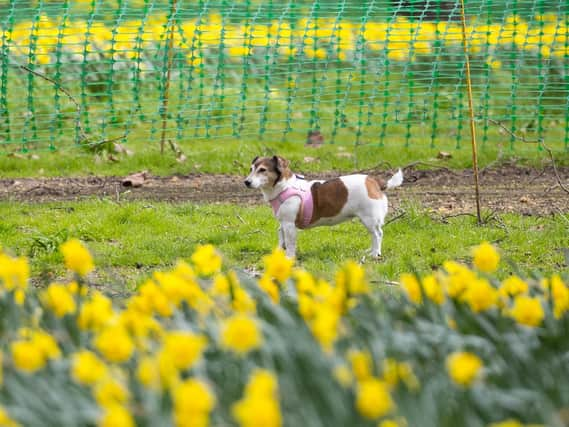Perfect Pooches: How to check your dog for worms and fleas and treatments


The symptoms of each type of worm vary but symptoms can include diarrhoea, vomiting, extreme coughing, lethargy or unusual tiredness and weight loss.
Most treatments require a monthly to three monthly dose. A worm count test kit can be bought from wormcount.com for around £20, if present the species will be identified and your vet can recommend a suitable treatment.
Advertisement
Hide AdAdvertisement
Hide AdFleas are can be picked up on walks, you’ll also need to treat your house as eggs can lie dormant in cracks and crevices for anything up to a year!
Some symptoms include scratching and biting, flea dirt (often on the lower back and the base of the tail, feels like grains of sand), enjoying scratches and tickles more than usual because they are so itchy and turning quickly or jumping to nibble their back end.
Treat all of your pets at the same time. You could use a prescription product from your vets for different species. Products you can buy off the shelf from a supermarket or pet shop often contain less effective ingredients, and therefore are mostly ineffective. Buy a good quality household spray but be warned — household flea sprays often contain permethrin which is extremely toxic to cats, fish and birds.
Fleas can also pass on tapeworms to dogs too, so you’ll need to treat for worms.
Advertisement
Hide AdAdvertisement
Hide AdTo try and prevent fleas check your pets often for flea dirt, particularly around their back end and above the base of their tail. Vacuum regularly, especially around your pet’s bedding and under furniture. Wash bedding at 60°C or hotter to kill fleas and their eggs. A natural preventative is apple cider vinegar (ACV), fleas don’t like a dog who is pH balanced. Your dog’s skin and coat should be slightly acidic for fleas to find him inhospitable. You can achieve this by feeding your dog ACV and spraying him with it too! Feed your dog ½ teaspoon of ACV per day per 25 lbs. ACV contains important nutrients, vitamins, minerals, vital acids and potassium. Spray Recipe: 4 oz warm water, 6 oz ACV (unfiltered and preferably organic), ¼ tsp of sea salt or pink Himalayan salt. Mix the ingredients in a small spray bottle and spray your dog’s coat weekly. Avoid eyes or any open wounds.
If I see fleas or have knowingly groomed a dog with fleas then I treat them all with good quality treatments from the vets. It is extremely rare that my dogs get fleas so I don’t waste my money on monthly treatments.
(Rachel is the owner of ViP Dog Grooming in Wakefield and has worked with dogs her whole life)